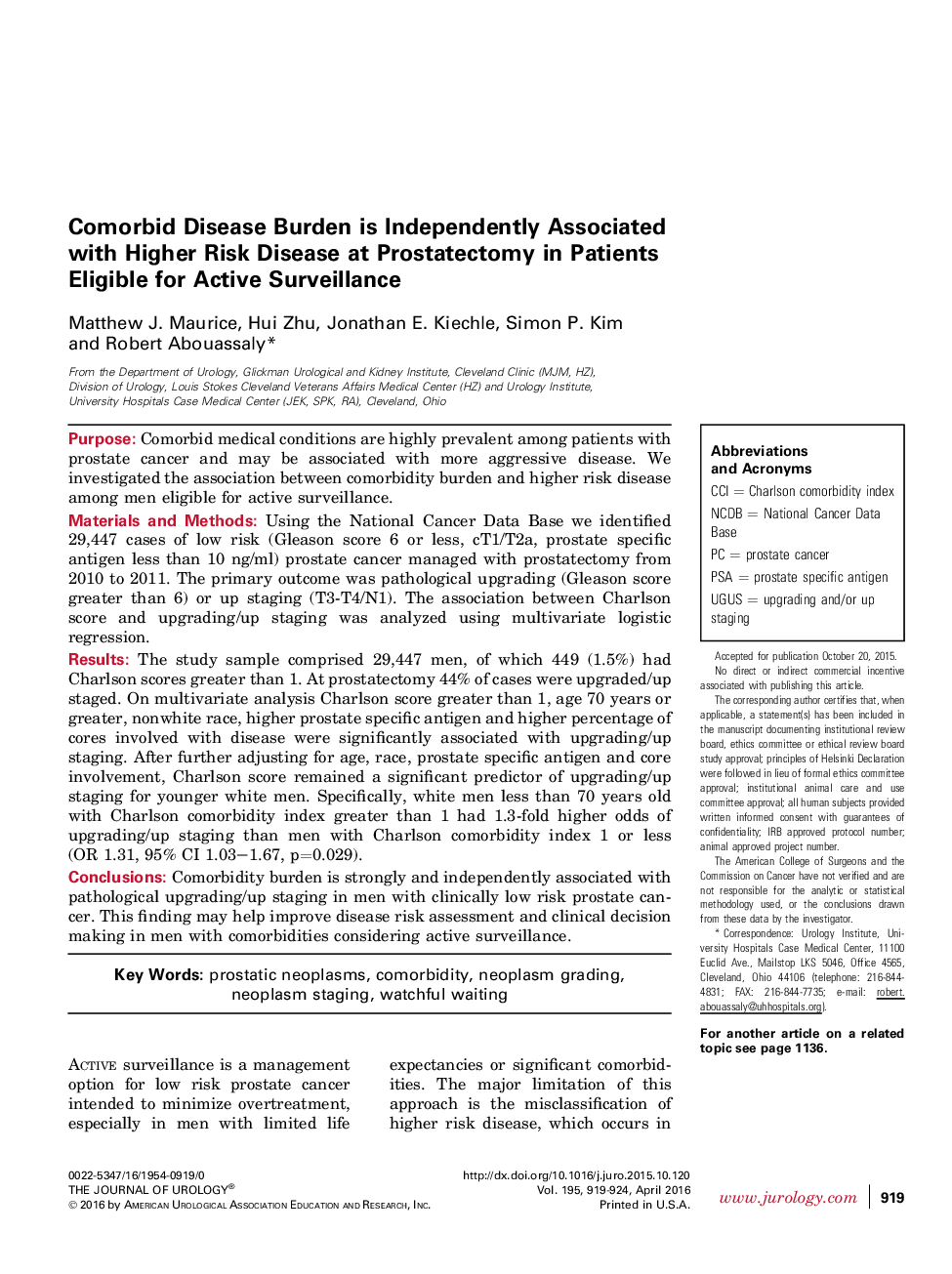| Article ID | Journal | Published Year | Pages | File Type |
|---|---|---|---|---|
| 3858531 | The Journal of Urology | 2016 | 6 Pages |
PurposeComorbid medical conditions are highly prevalent among patients with prostate cancer and may be associated with more aggressive disease. We investigated the association between comorbidity burden and higher risk disease among men eligible for active surveillance.Materials and MethodsUsing the National Cancer Data Base we identified 29,447 cases of low risk (Gleason score 6 or less, cT1/T2a, prostate specific antigen less than 10 ng/ml) prostate cancer managed with prostatectomy from 2010 to 2011. The primary outcome was pathological upgrading (Gleason score greater than 6) or up staging (T3-T4/N1). The association between Charlson score and upgrading/up staging was analyzed using multivariate logistic regression.ResultsThe study sample comprised 29,447 men, of which 449 (1.5%) had Charlson scores greater than 1. At prostatectomy 44% of cases were upgraded/up staged. On multivariate analysis Charlson score greater than 1, age 70 years or greater, nonwhite race, higher prostate specific antigen and higher percentage of cores involved with disease were significantly associated with upgrading/up staging. After further adjusting for age, race, prostate specific antigen and core involvement, Charlson score remained a significant predictor of upgrading/up staging for younger white men. Specifically, white men less than 70 years old with Charlson comorbidity index greater than 1 had 1.3-fold higher odds of upgrading/up staging than men with Charlson comorbidity index 1 or less (OR 1.31, 95% CI 1.03–1.67, p=0.029).ConclusionsComorbidity burden is strongly and independently associated with pathological upgrading/up staging in men with clinically low risk prostate cancer. This finding may help improve disease risk assessment and clinical decision making in men with comorbidities considering active surveillance.
